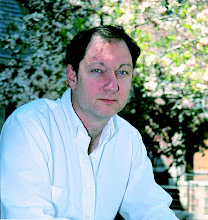Setting the record right, Coalition to Stop Gun Violence gets corrected
Once again, researcher John R. Lott Jr. is revealing the ideology behind his misrepresented statistics in claiming that gun shows are not a major source of crime guns (Letters to the Editor, "Gun scruples," Sunday).
The Bureau of Alcohol, Tobacco and Firearms (ATF) report in question, "Following the Gun: Enforcing Federal Laws Against Firearms Traffickers" (http://www.atf.gov/pub/fire-explo_pub/pdf/followingthegun_internet.pdf) analyzed crime-gun trace data compiled from 1,530 firearms-trafficking investigations over a 2½-year period.
The report found that "gun shows were a major trafficking channel, involving the second highest number of trafficked guns per investigation (more than 130), and associated with approximately 26,000 illegally diverted firearms."
ATF further stated that "prohibited persons, such as convicted felons and juveniles, do personally buy firearms at gun shows and gun shows are sources of firearms that are trafficked to such prohibited persons."
The National Rifle Association and its allies in Congress were so alarmed at the results of this report and others that they acted in 2004 to prohibit the ATF by law from releasing any further trace information to the American public under Freedom of Information Act. One would be hard-pressed to imagine a more anti-democratic measure outside of book burning.
The Department of Justice study mentioned by Mr. Lott (http://www.ojp.usdoj.gov/bjs/guns.htm) involved a survey of inmates in state prisons, 2 percent of whom said that they purchased the gun used in their crime at a flea market or gun show.
An additional 80 percent indicated they got their gun from "family, friends, a street buy or an illegal source." No effort was made to trace the crime guns involved in the study to find out where they were originally bought and how they were subsequently trafficked.
It is likely that many of these guns were originally purchased at gun shows. The only thing the study hinted at was how the last illegal transfer of a firearm had taken place, and we know from ATF that guns often change hands several times before being used in crimes.
The Virginia State Police report that background checks prevented 2,668 illegal transactions by criminals and other prohibited purchasers in Virginia in 2005 alone. If this type of activity is taking place in regulated gun sales that are overseen by the ATF, then what type of individuals are buying guns when the rules are: "No paperwork, cash and carry"? It's a question that the citizens of Virginia should be asking their legislators.
Here is my response.
The executive director of theCoalition to Stop Gun Violence's response to my letter was extremely misleading ("Follow the gun trails," Letters, Feb. 3).
First, simply repeating the number of transfers investigated by the Clinton administration ignores the issue that I raised: theBureau of Alcohol, Tobacco and Firearms investigations were not representative of how the typical criminal got their guns.
It really just shows where the Clinton administration decided to put its investigative resources. For example, if the Clinton administration had decided to only investigate gun shows, they could have said the percentage of investigations involving gun shows was 100 percent. What would that prove?
Second, the possibility that a third party might have gotten a gun from a gun show and then transferred it to someone who used it in a crime will not be prevented by regulations on how guns are sold at gun shows.
Regulations at gun shows could theoretically stop the 0.7 percent of armed criminals who obtained their guns at gun shows, but the regulations will not stop someone who can buy a gun at a gun show from transferring a gun outside the show and the regulatory costs will significantly reduce the number of gun shows by about 14 percent.
Finally, not only is there no academic journal study by economists or criminologists showing that regulations such as the Brady Act reduce violent crime, but even island nations, such as Australia, England and Ireland, with easy borders to defend have seen increases in murder and violent crime after complete or partial gun bans were adopted.
The notion that past gun control failures can be fixed with yet more laws should at some point give pause to even someone from the Coalition to Stop Gun Violence.
Labels: Crime, GunControl, GunShowRegulations







2 Comments:
What these morons seem to forget is that if a criminal who has been prohibited from posessing firearms buys a gun, through whatever means, from anyone, anywhere, it is *THEY* who have committed a crime, NOT THE SELLER!
Leastways, that's the way it should be...
This is irrelevant of everything else, and probably is already known to you-all, but in case not, I think Dr. Lott might wish to be aware of this letter to the editor:
http://www.dnronline.com/search_letterdetails.php?LID=3821&key=more%20gun%20more%20crime&title=&date1=&date2=
Dave Cumming
Spokane, WA
Post a Comment
Links to this post:
Create a Link
<< Home